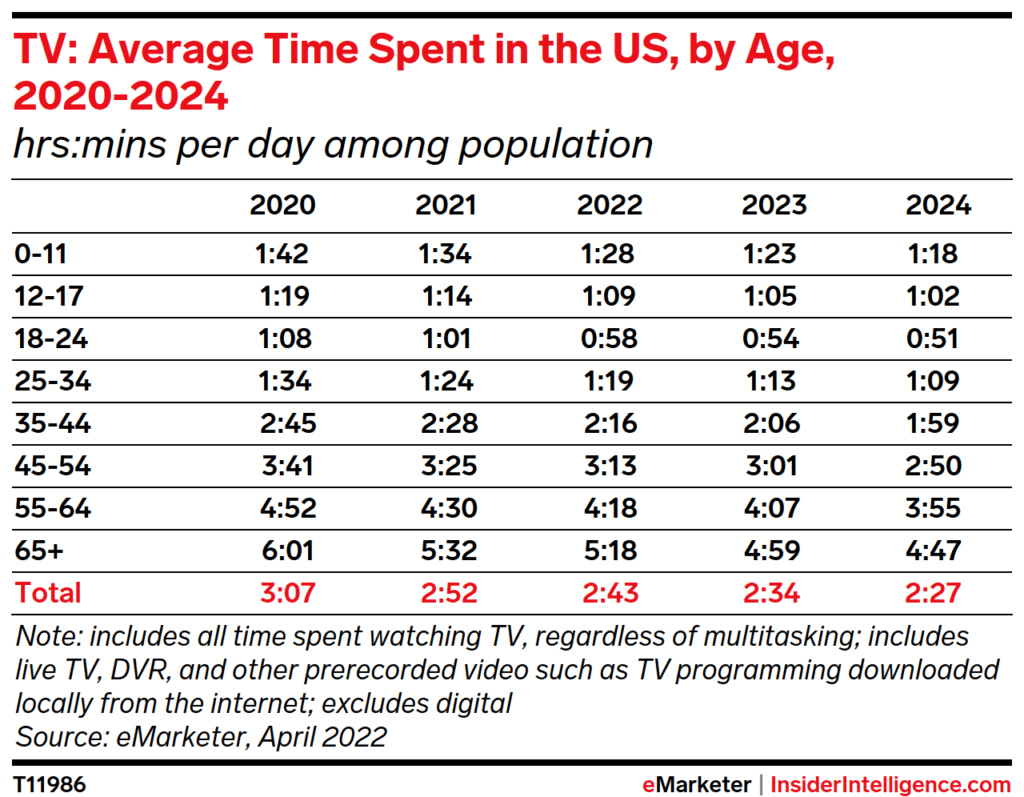Baseball and apple pie are considered “America’s pastimes” by most.
Video games? Not so much.
We could argue, however, that gaming was a pastime during the pandemic. A pandemic pastime, if you will.
No matter how you look at the numbers, the video game business benefited from the pandemic.
Why?
Michael Pachter, an analyst at Wedbush Securities, summed it up nicely: “You have more time and you’re bored.”
A handful of stats paint an almost unbelievable picture of the grip video games had on society over the past few years:
- Microsoft’s Game Pass surpassed 10 million users.
- Nintendo sold more than 12 million Switches during the pandemic. Its profits tripled as well.
- In March 2020, Twitch users cleared 1.1 billion watch hours.
- YouTube Gaming had its biggest year ever.
As video game usage soared, so did the ad spend for video game products.
Most of this ad spend came from virtual retailers, game subscription services, video game titles, and consoles.
But what about spending within games?
How are brands using in-game advertising to reach new consumers?

Exploring the Growth of In-Game Advertising
In-game advertising isn’t new.
The practice of putting ads in between content has been around for ages. But as gaming spread its wings and appealed to a more diverse audience, more advertisers jumped to get in front of a highly engaged yet niche audience.
In-game ad formats are changing
In-game ads have evolved over the years.
Originally, developers would work the ads into the code and release a game update for users.
With time, in-game ad capabilities advanced. Ads could be inserted dynamically, but this was still costly. It didn’t provide the best experience for users, either.
Today, ads can appear with far less disruption.
“Rather than inserting adverts into the game for the players to see, there are solutions for inserting adverts into a stream,” explains founder and CEO at Cheesecake Digital Philip Wride.
Fortnite is one of the biggest names revolutionizing in-game advertising.
From Nike Inc. rewarding virtual Jordan sneakers to Travis Scott’s concert that attracted more than 12 million attendees, Fortnite is a pro at in-game advertising.
Fortnite players were even able to test a new Coca-Cola flavor before it hit the shelves of supermarkets.
With nearly 400 million active users, Fortnite will continue to set the bar for how advertisers weave their brands into video games.
“Sites joke that Fortnite is no longer a game, but one big advertisement — and there is some truth to that,” writes Matthew Liebl. Even though fans know they are seeing ads, it’s not annoying to them because the ads feel part of an exciting experience.
In-game ads are reaching different personas
There’s an old stereotype that gamers are solitary guys chatting on headsets and drinking a caffeinated beverage — but that’s far from the truth.
There’s a video game for everybody today.
“I’d argue that almost every brand in the world has an overlap with the gaming audience,” said the CEO and co-founder of in-game ad platform Anzu.io Itamar Benedy.
Why?
In 2022, there was an estimated 3 billion gamers worldwide. While that’s down from the 3.2 billion gamers in 2021, the morale of the story doesn’t change: People love video games.
With that many people playing, you’ll see everybody from aunts playing Candy Crush to teenagers playing eSports.
With those different buyer personas, brands from Kindle to Disney to the NFL can find someone to market their brand to in a video game.
Also, advertisers remember that younger generations are changing their media preferences.
Younger generations, especially generation Z, are moving away from TV and opting for video games. According to Deloitte, Gen Z teen males spend an average of 12 hours per week gaming.

On top of that, they are turning to eSports instead of live sports. Heck, League of Legends gets more viewers than the Super Bowl. Even more telling is that revenue in the eSports market is projected to reach $1.6 billion this year.
With more attention on games, advertisers can get creative to reach their audiences. They can learn from brands like DHL and Wendy’s, which have used games to build brand awareness.
In-game ads may also hold a special place in the heart of brands in the post-cookie world. With Google expected to sunset third-party cookies in 2024, advertisers must find other ways to connect with their audience.
In-game ads could be one of those ways, especially if recent advancements with in-game ad measurability prove their worth.

The Impact of COVID-19 on In-Game Ads
During this pandemic, some ad tech startups and video game developers used technology to display public service announcements in games.
Rebellion Developments placed ads that said “Stay home. Save lives.” in their games. Activision Blizzard’s London-based division, King, donated 230 placements to COVID-related information.
As we reopen, we will likely see PSAs decrease, but the value of in-game ads increase.
Looking at the impact of COVID-19, an analysis from Technavio predicts the in-game advertising market is expected to grow by nearly $11 billion by 2024. Games have only become more popular during this time, and even though people will return to work and school, COVID habits will linger.
As they linger, new technology—and inventory—will open up. Both Sony and Microsoft are exploring the idea of offering a private marketplace to allow brands to buy ads in free-to-play games.
For more insights, sign up for MediaRadar’s blog here.


